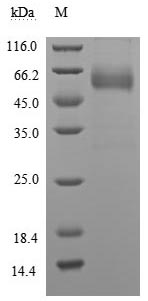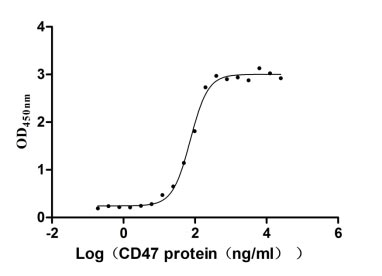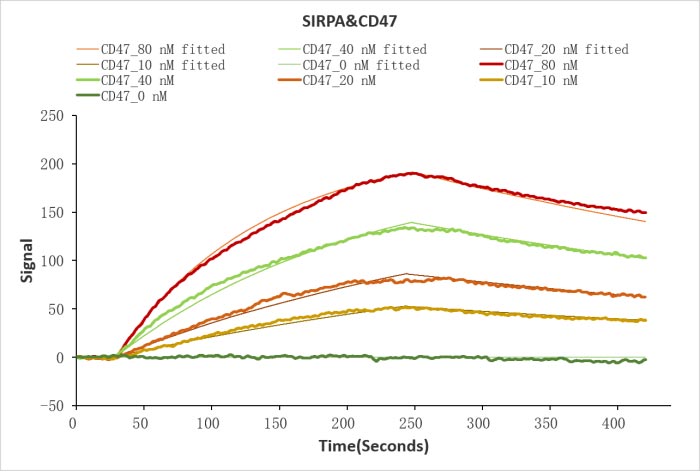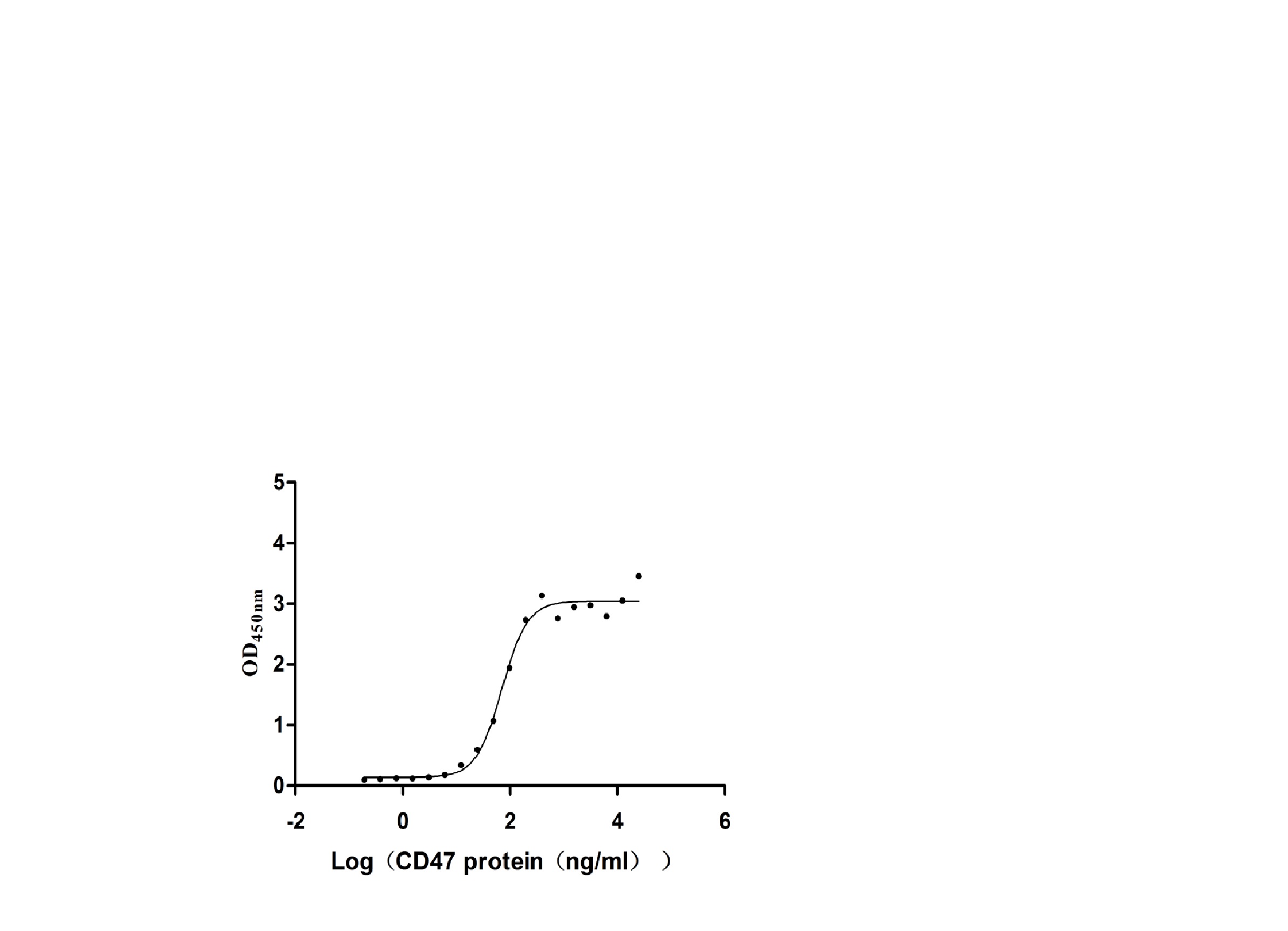The synthesis of the recombinant human CD47 protein with a C-terminal hFc-tag starts with cloning the gene that encodes the 19-139aa of the human CD47, fused with the N-terminal His-tag sequence, into a plasmid vector and transforming it into the mammalian cells. Upon induction, the positive mammalian cells express the hFc-tagged CD47 protein, which is extracted by cell lysis. Affinity chromatography is used for the purification of the harvested protein. SDS-PAGE evaluates the protein's purity, exceeding 90%. The endotoxin of this recombinant CD47 is less than 1.0 EU/ug as determined by the LAL method. Its activity has also been validated in a functional ELISA and an LSPR Assay.
Human CD47, a cell surface protein, is widely expressed in different cell types, including cancer cells, where it acts as a self-protection mechanism by interacting with signal regulatory protein alpha (SIRPα) to inhibit phagocytosis by macrophages [1][2]. Studies have shown that CD47 is a key regulator of macrophage-mediated phagocytosis and is involved in the development and progression of various cancers [4][5]. CD47 is frequently upregulated in tumor cells, contributing to tumor growth, metastasis, and immune evasion [3]. Research has demonstrated that targeting CD47 can be an effective strategy in cancer treatment.
References:
[1] J. Sockolosky, M. Dougan, J. Ingram, C. Ho, M. Kauke, S. Almoet al., Durable antitumor responses to cd47 blockade require adaptive immune stimulation, Proceedings of the National Academy of Sciences, vol. 113, no. 19, 2016. https://doi.org/10.1073/pnas.1604268113
[2] M. Sue, Blockade of sirpα-cd47 axis by anti-sirpα antibody enhances anti-tumor activity of dxd antibody-drug conjugates, Plos One, vol. 19, no. 6, p. e0304985, 2024. https://doi.org/10.1371/journal.pone.0304985
[3] H. La, D. Tran, H. Tran, & L. Nguyen, Third-generation anti-cd47-specific car-t cells effectively kill cancer cells and reduce the genes expression in lung cancer cell metastasis, Journal of Immunology Research, vol. 2021, p. 1-13, 2021. https://doi.org/10.1155/2021/5575260
[4] V. Golubovskaya, R. Berahovich, H. Zhou, S. Xu, H. Harto, L. Liet al., Cd47-car-t cells effectively kill target cancer cells and block pancreatic tumor growth, Cancers, vol. 9, no. 10, p. 139, 2017. https://doi.org/10.3390/cancers9100139
[5] E. Piccione, S. Juárez, J. Liu, S. Tseng, C. Ryan, C. Narayananet al., A bispecific antibody targeting cd47 and cd20 selectively binds and eliminates dual antigen expressing lymphoma cells, Mabs, vol. 7, no. 5, p. 946-956, 2015. https://doi.org/10.1080/19420862.2015.1062192










